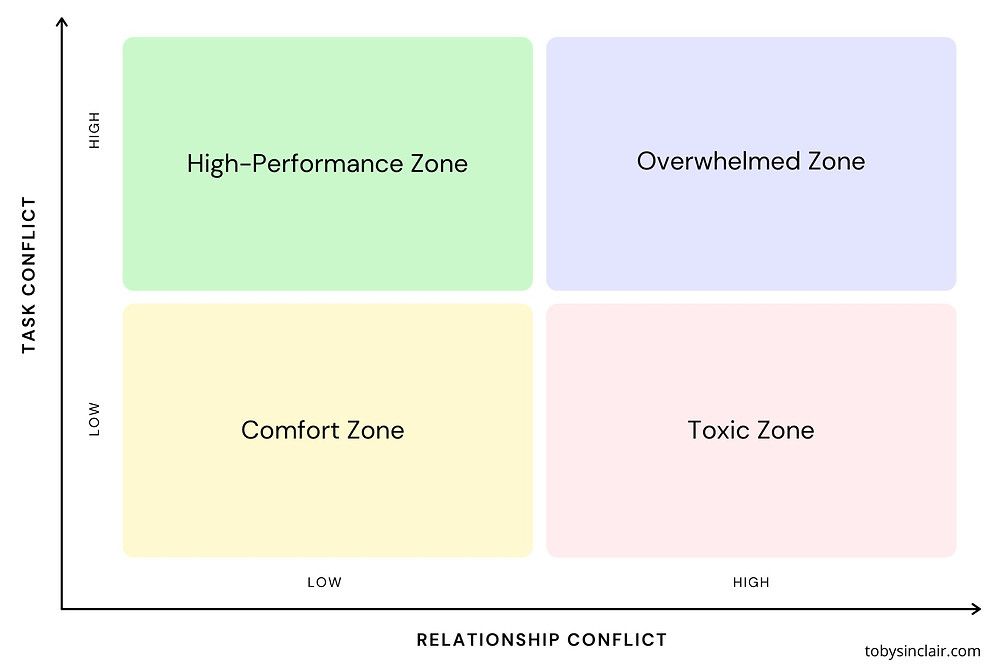“Without conflict, there is no harmony; there is only apathy.”
– Adam Grant, author of Think Again, The Power of Knowing What You Don’t Know
The best leaders know that conflict is inevitable and healthy.
The right kind of conflict makes companies, teams, and individual contributors better.
To avoid conflict is to adopt a posture of apathy toward our work and the outcomes we desire to achieve.
But what exactly is the right kind of conflict?
According to Grant, there are two types of conflict: task conflict and relationship conflict.
Task conflict involves the work itself. It focuses on the process. It’s how we work with a team to identify the best way forward in a situation; e.g., launching a new product, running a campaign, or handling a customer escalation.
High-performing teams experience high amounts of task conflict. They have a fundamental trust for one another and are therefore willing to challenge and debate to get to the right answer.
These teams tend to achieve better outcomes than those who don’t – or can’t – behave in this way.
Teams that don’t like one another have a different experience. They have minimal task conflict because they lack trust. The environment is emotional and political.
Rather than engaging in dialog and debating issues, an easier route is pursued: going along to get along.
The end result? Mediocrity.
In the most severe cases, the consequences are dire. Grant uses the NASA Columbia disaster to illustrate.
Rather than admitting a problem and engaging in debate on how to address a potentially life-threatening issue, NASA managers chose not to engage.
Upon reentry to the atmosphere, the space shuttle Columbia broke up miles above Earth at 18 times the speed of sound. Seven American astronauts died.
The team lacked psychological safety and trust to engage in good and necessary conflict required to save human lives.
Would a different outcome have been possible if NASA’s leaders had more trust and deeper interpersonal relationships? Would they have been able to engage in task conflict needed to bring our men and women home safely?
The purpose of leadership is to create an environment of safety and trust which enables teams to engage in task conflict.
Under these conditions – low relationship conflict and high task conflict – teams and individuals enter the High-Performance Zone and can do their best work.
As we prepare for the week ahead, here are some questions to ponder about our own teams, and whether these conditions exist in our work:
Do team members speak their minds in a group setting?Are team members comfortable challenging one another in public? Does your team disagree, debate, decide, and then align?
If the answer to any of these questions is no then perhaps our time is best spent this week focusing on team building and interpersonal relationships before we set about to complete the tasks on our to-do list.
Have a great weekend and a great week ahead.
✌🏼
Some of my favorite reads, listens, views of the week:
Here’s last week’s episode of the Gain Grow Retain podcast where Kristi and I discuss Think Again, which inspired this post.“The next decade will be marked by how well Marketing and Customer Success work together.” I couldn’t agree more. LinkedIn post by Airmeet CMO, Mark Kilens. Oldie but goodie: Leaders ask good questions. 6 characteristics of a good question by yours truly, on LinkedIn.

